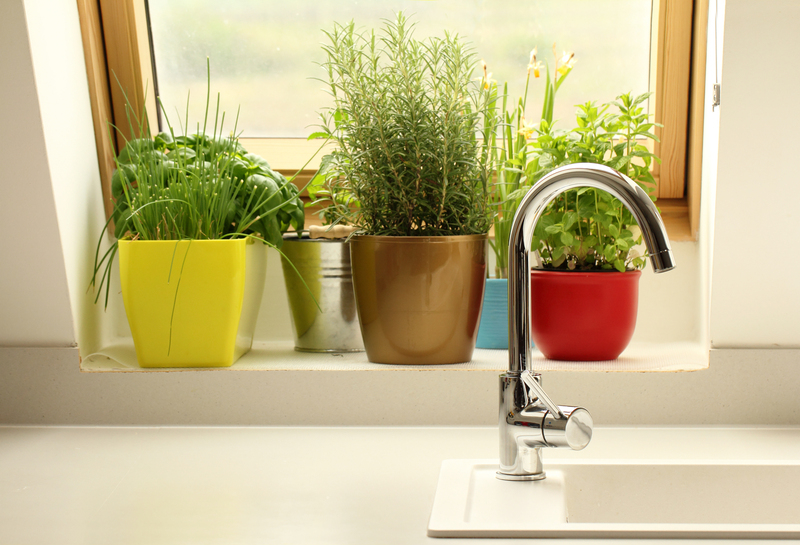How to Winterize Your Garden Plants for Survival
Posted on 15/09/2025
How to Winterize Your Garden Plants for Survival
Winter's chill is just around the corner, and for passionate gardeners, knowing how to winterize your garden plants for survival can be the difference between a lush, vibrant spring garden and one that struggles to regrow. This comprehensive guide will walk you through the most effective strategies to protect your cherished plants from harsh winter conditions, ensuring their survival and resilience all season long.
Why Winterizing Garden Plants Matters
Before diving into the step-by-step process of winterizing your garden plants, it's crucial to understand why this process is essential. Winter brings freezing temperatures, biting winds, and intermittent snowfall or ice, all of which can threaten plant health.
- Prevent root and stem damage
- Encourage vigorous spring growth
- Reduce the risk of disease and pest infestations
- Minimize plant loss during harsh cold snaps

Assessing Your Garden: What Needs Protection?
Different plants have different levels of cold hardiness. Start your winterization process by taking stock of your garden:
- Identify vulnerable species - Tender perennials and newly planted trees are especially at risk.
- Note microclimates - Some areas may be more exposed to wind or collect extra moisture.
- Determine sun exposure - Sunny winter spots can cause false thawing and refreezing damage.
This initial assessment helps you prioritize your efforts and winterize garden plants that need care the most.
Key Strategies for Winterizing Your Garden Plants
1. Clean Up and Remove Debris
Before frosts set in, thoroughly clean your planting beds. Remove fallen leaves, spent stems, and any diseased plant material. This helps prevent overwintering pests and fungi, keeping your garden healthy come spring.
2. Pruning: What to Cut and What to Leave
- *Prune dead or diseased branches* from trees and shrubs to reduce breakage under snow's weight.
- *Avoid heavy pruning* of some perennials until spring, as leftover foliage can add an extra layer of frost protection.
- "Leave seed heads" on some perennials for winter interest and wildlife food.
Proper pruning is a fine balance but essential for winter plant survival.
3. Mulching for Insulation
Mulch is your garden's winter coat! Apply a thick 2-4 inch layer of organic mulch such as straw, shredded leaves, or bark around the root zones. This insulates soil, stabilizes temperature, and prevents freeze-thaw cycles that can heave roots out of the ground.
- *Wait until the ground is cold but not frozen* before applying mulch to avoid trapping pests or diseases.
- *Keep mulch a few inches away from plant crowns and tree trunks* to prevent rot and rodent damage.
4. Watering Before the Freeze
Give plants a deep watering session in late autumn before the ground freezes. Well-hydrated roots withstand cold better!
- Water on days above freezing if winter is dry, especially for evergreens that lose moisture through their needles or leaves.
- Avoid soggy soil - too much water can cause root rot.
Proper pre-freeze watering is often overlooked in winterizing garden plants but is absolutely essential for their survival.
5. Protecting Delicate and Potted Plants
- Move potted plants into garages, sheds, or indoors if possible.
- For plants that must stay outside, group pots together against a south-facing wall and wrap pots with burlap or bubble wrap for extra insulation.
- Blanket delicate shrubs or roses with burlap, row covers, or purpose-made plant "cozies".
6. Shielding Against Harsh Elements
Strong winter winds and sun can desiccate and kill even cold-hardy plants. Here's how to shield your garden:
- Install windbreaks from burlap, snow fencing, or evergreen boughs around sensitive plants.
- Wrap trunks of young trees with tree guards to prevent sunscald and animal damage.
Effective protection means your winterized garden plants emerge unscathed in spring.
7. Caring for Lawns and Ground Covers
Winterizing your garden goes beyond flowerbeds:
- Keep lawns slightly longer with the last mow to insulate crowns and roots.
- Rake leaves and debris - avoid smothering grass and ground covers.
- Protect ground covers with light mulch if frost heaving is a problem in your region.
Winterizing Container and Raised Bed Gardens
Pots and raised beds lose heat more rapidly than in-ground plantings. Here's how to provide extra care:
- Use frost-proof containers or insulate pots with bubble wrap, straw, or mulch.
- Elevate containers off the cold ground or patio to avoid root freeze.
- In raised beds, apply extra-thick mulch or install row covers for added warmth.
Tips for Winterizing the Vegetable Garden
Winterizing your vegetable garden requires a unique approach:
- Harvest all remaining produce before the first hard frost.
- Pull up annuals and turn under green manures or cover crops if planted.
- Cover beds with burlap, straw, or floating row covers to prevent erosion and suppress weeds.
- For overwintering crops (like garlic or hardy greens), mulch heavily and, if possible, use cold frames or cloches.
Special Considerations for Perennials and Shrubs
Many perennials and shrubs survive winter with minimal intervention, but a little help goes a long way:
- Know your USDA Hardiness Zone and match care to local conditions.
- Cut back perennials only if disease was present; otherwise, leave stems tall for extra natural protection.
- Stake or tie floppy shrubs and roses to prevent damage from heavy snow or ice.
How to Deal with Heavy Snow and Ice
Snow can insulate, but too much weight breaks branches. Here's what to do:
- Gently brush heavy snow off evergreens and shrubs with a broom. Avoid shaking, which can snap limbs.
- Don't attempt to remove ice; let it melt naturally to avoid breaking branches.
Common Mistakes When Winterizing Garden Plants
Even well-intentioned gardeners can make mistakes. Watch out for these pitfalls:
- Applying mulch too early or too thickly
- Cutting plants back too aggressively
- Forgetting to water before the ground freezes
- Leaving pots unprotected on hard surfaces
- Neglecting to monitor overwintering pests
Avoiding these missteps makes your garden winterization efforts far more successful.
FAQs: Winterizing Garden Plants for Survival
When should I start winterizing my garden?
Begin winterizing your garden plants after the first hard frost but before the ground freezes solid. This timing preserves soil warmth and allows plants to acclimate naturally.
Can I use plastic to cover my plants?
While plastic may offer short-term frost protection, never use it for long-term coverage. It traps moisture and lacks breathability, promoting disease. Choose burlap, frost blankets, or old sheets instead.
How much mulch should I use?
Apply 2-4 inches of mulch around beds and 6 inches over tender perennials or bulbs. Do not pile mulch against stems or crowns to prevent rot.
What is the best mulch for winter plant protection?
Organic mulch such as shredded leaves, straw, pine needles, or wood chips is preferred for effective insulation and soil health.
Should I fertilize before winter?
Avoid fertilizing late in the season, as this can trigger tender new growth that is highly susceptible to freezing. Hold off until spring.

Creating a Winter Garden Maintenance Checklist
- Assess and categorize your plants by hardiness
- Clean up debris and diseased material
- Prune judiciously
- Apply appropriate mulching
- Water thoroughly before freeze-up
- Protect pots and containers
- Install windbreaks and covers
- Stake and support shrubs as needed
- Monitor regularly throughout the winter
Staying organized helps ensure all your plants get the attention they need for winter survival.
Conclusion: Give Your Garden the Best Chance to Thrive
Knowing how to winterize your garden plants for survival is a key skill for any gardener aiming for a bountiful and beautiful springtime landscape. By understanding your garden's unique needs, applying mulches wisely, pruning with care, and shielding against the elements, you can confidently face the cold season without fear. Remember, a little effort now pays huge dividends when your plants burst back to life after winter's end.
Now that you're equipped with expert knowledge, get started today and ensure your garden not only survives the winter--but thrives come spring!



